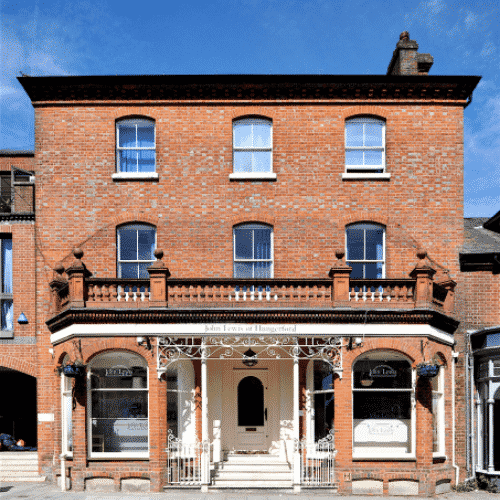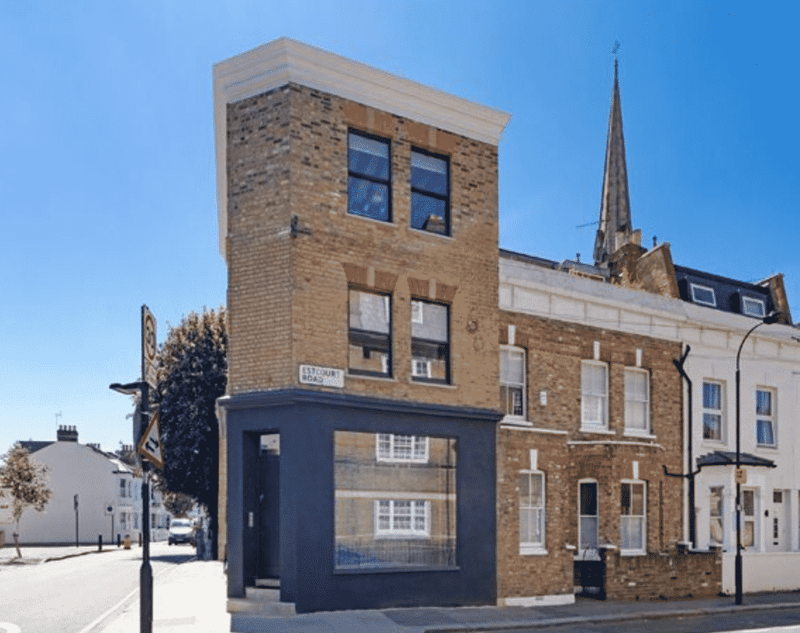
Searching for a property is straightforward, but a property search with this many specifications for commercial to residential conversion requires a tool catered to find you the highest level of profit.
Market update
Covid-19 has seen the closure of many businesses across the country. Devastated high streets show the remanence of Topshop, Debenhams and now GAP. Questions were raised after the last recession in 2008 around how to deal with the empty retail units and how to keep our town centres as community focal points. Unfortunately, those cries for help were ignored – until March 2021.
What are the commercial to residential conversion opportunities?
Until recently, converting a commercial building to residential meant tackling extensive planning applications and in many circumstances was not viable or indeed, not possible. However, the announcement of Class MA changes everything!
New permitted development right
Historically, permitted development rights, or PD rights for short, were probably most talked about in residential circumstances. They avoided the headache of submitting full planning permission for changes that would add value to a residential property such as single-storey extension, loft conversion and changing internal layouts.
This residential concept applied to commercial property is set to be a game-changer in rebuilding Britain’s struggling high streets and housing shortage.
Permitted development rights for commercial property can seem overwhelming. However, once you know the basics there is an easy way to find these opportunities. Let’s start with Class E…
What is Class E?
Class E was introduced on 1st September 2020 and combines these former use classes under one class.
A1 – Shops, retail warehouses, post offices, ticket and travel agencies, sale of cold food for consumption off premises, hairdressers, funeral directors, hire shops, dry cleaners, and internet cafes.
A2 – Financial and professional services (Banks, building societies, estate and employment agencies, professional services (not health or medical services).
A3 – Restaurants and cafes.
B1 – Businesses including offices, research and development and industrial process (which can be carried out in any residential area without causing detriment to the amenity of the area).
D1 – Clinics, health centres, creches, day nurseries, day centres.
D2 – Gymnasiums, indoor recreations not involving motorised vehicles or firearms.
How does Class E benefit entrepreneurs?
The introduction of Class E means that you can now change the use of any building falling under Class E to any of the other uses. This presents an exciting opportunity to repurpose buildings and increase their value according to the current demand in the area.
What is Class MA?
Class MA PD rights were first announced in March 2021 to improve properties in town centres and increase the amount of living accommodation on offer. Class MA takes the opportunities of Class E one significant step further.
From 1st August 2021 you can apply for prior approval to convert a property in use class E to residential, under Class MA.
However, like most things in life, there are some caveats involved and it is important to remember these.
- Don’t apply before the 1st August 2021 or you will be refused.
- The property must be vacant for 2 months before you apply for prior approval.
- The maximum size of property you can convert under class MA is 1,500sqm (16,146 sqft).
- Listed buildings are excluded from Class MA
- Locations such as areas of natural beauty (AONB) and Sites of Scientific Interest (SSSI) are also excluded.
How does the Class MA benefit property entrepreneurs?
Put simply, it’s likely that there is more demand for a residential property than a commercial property and it will probably benefit from a higher value.
How to find the best opportunities?
So, you like the idea of converting a commercial property to residential as the profits available are huge for those the move first and find the best opportunities.
Finding these opportunities is like finding a needle in a haystack if you don’t use the right tools.
Nimbus Maps has thousands of on-market and off-market opportunities waiting for you to find instantly.
Using filters like location, use and size to name a few you can quickly create a shortlist of potential opportunities that meet your chosen criteria. The comprehensive information panel in Nimbus Maps gives you an accurate and detailed picture of the investment in seconds. Select from 22 standard overlays and 10 premium overlays to check for anything from flood zones to availability to average residential values. Add these potential opportunities to the Nimbus Maps workflow and you can manage each project as it progresses. You can even connect with the owner using the information in Nimbus Maps.
To discover how Nimbus is helping thousands of property developers and investors every day, book a free personalised demo today!

Key reads on the Nimbus blog
At Nimbus, we're committed to making property search, analysis and decision-making faster, smarter and more accessible. That's why we’re thrilled to announce a series of powerful updates that expand and enhance your experience whe...
The post-pandemic world hasn’t just changed where we work—it’s fundamentally reshaped what the office means. In cities across the UK, once-prized corporate spaces are now sitting underutilised, prompting CRE professionals to ask a...
Chancellor Rachel Reeves' Spring Statement of 2025 has unveiled bold measures to rejuvenate the UK's property sector, focusing on tackling the housing shortage, driving economic growth, and improving housing affordability. In this...
UK solar and energy storage market report 2025 Introduction The UK’s solar energy and battery storage sector is undergoing a rapid transformation, bolstered by ambitious climate targets and supportive policies. Solar photovoltaics...